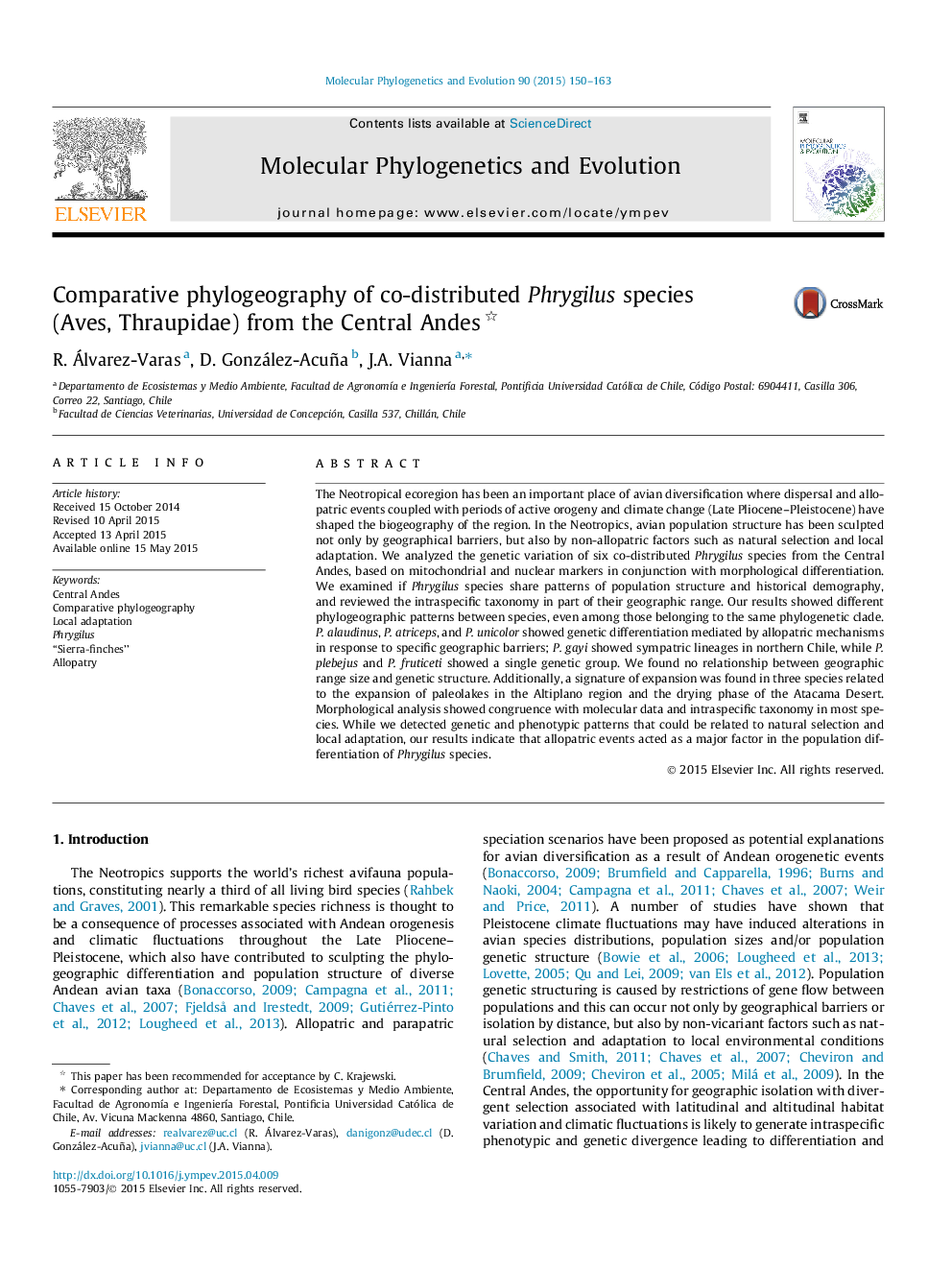| کد مقاله | کد نشریه | سال انتشار | مقاله انگلیسی | نسخه تمام متن |
|---|---|---|---|---|
| 2833770 | 1570806 | 2015 | 14 صفحه PDF | دانلود رایگان |

• Phylogeographic patterns were different between co-distributed Phrygilus species.
• No relationship were found between geographic range size and genetic structure.
• Signature of expansion was related to the Paleolakes and Atacama Desert.
• There was congruence between molecular and morphological data in intraspecific taxonomy.
• Vicariant events are major factor in the population differentiation of Phrygilus.
The Neotropical ecoregion has been an important place of avian diversification where dispersal and allopatric events coupled with periods of active orogeny and climate change (Late Pliocene–Pleistocene) have shaped the biogeography of the region. In the Neotropics, avian population structure has been sculpted not only by geographical barriers, but also by non-allopatric factors such as natural selection and local adaptation. We analyzed the genetic variation of six co-distributed Phrygilus species from the Central Andes, based on mitochondrial and nuclear markers in conjunction with morphological differentiation. We examined if Phrygilus species share patterns of population structure and historical demography, and reviewed the intraspecific taxonomy in part of their geographic range. Our results showed different phylogeographic patterns between species, even among those belonging to the same phylogenetic clade. P. alaudinus, P. atriceps, and P. unicolor showed genetic differentiation mediated by allopatric mechanisms in response to specific geographic barriers; P. gayi showed sympatric lineages in northern Chile, while P. plebejus and P. fruticeti showed a single genetic group. We found no relationship between geographic range size and genetic structure. Additionally, a signature of expansion was found in three species related to the expansion of paleolakes in the Altiplano region and the drying phase of the Atacama Desert. Morphological analysis showed congruence with molecular data and intraspecific taxonomy in most species. While we detected genetic and phenotypic patterns that could be related to natural selection and local adaptation, our results indicate that allopatric events acted as a major factor in the population differentiation of Phrygilus species.
Figure optionsDownload as PowerPoint slide
Journal: Molecular Phylogenetics and Evolution - Volume 90, September 2015, Pages 150–163